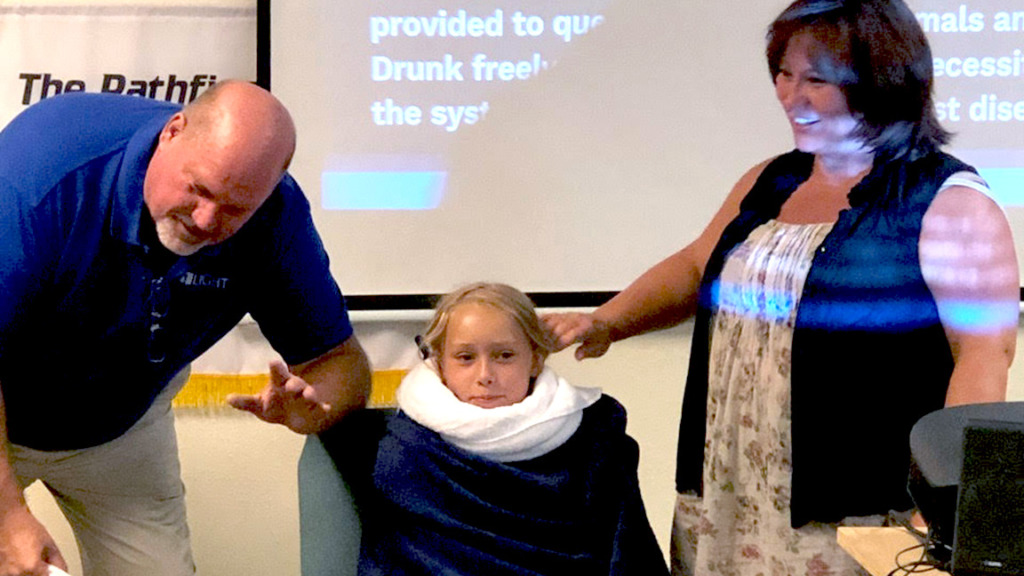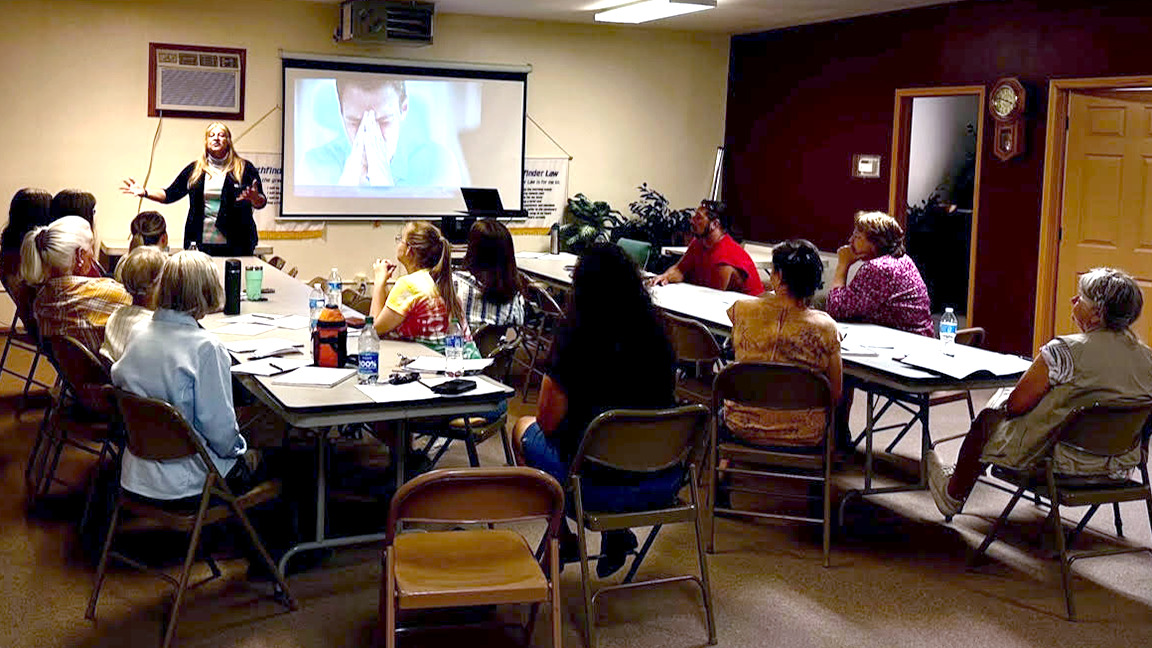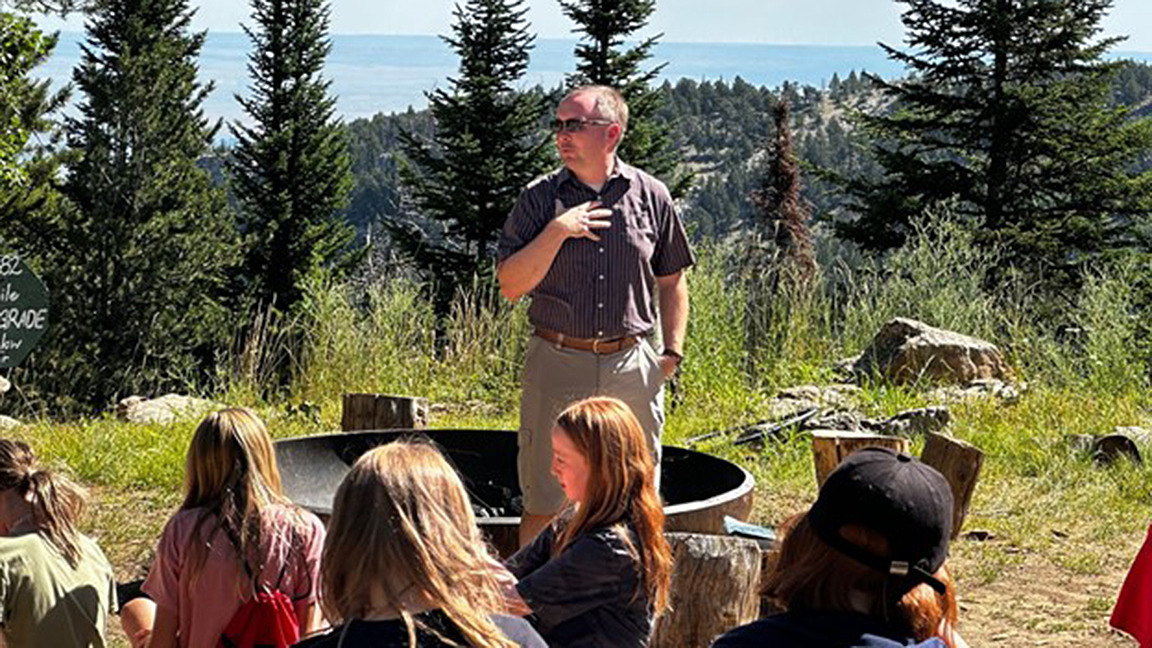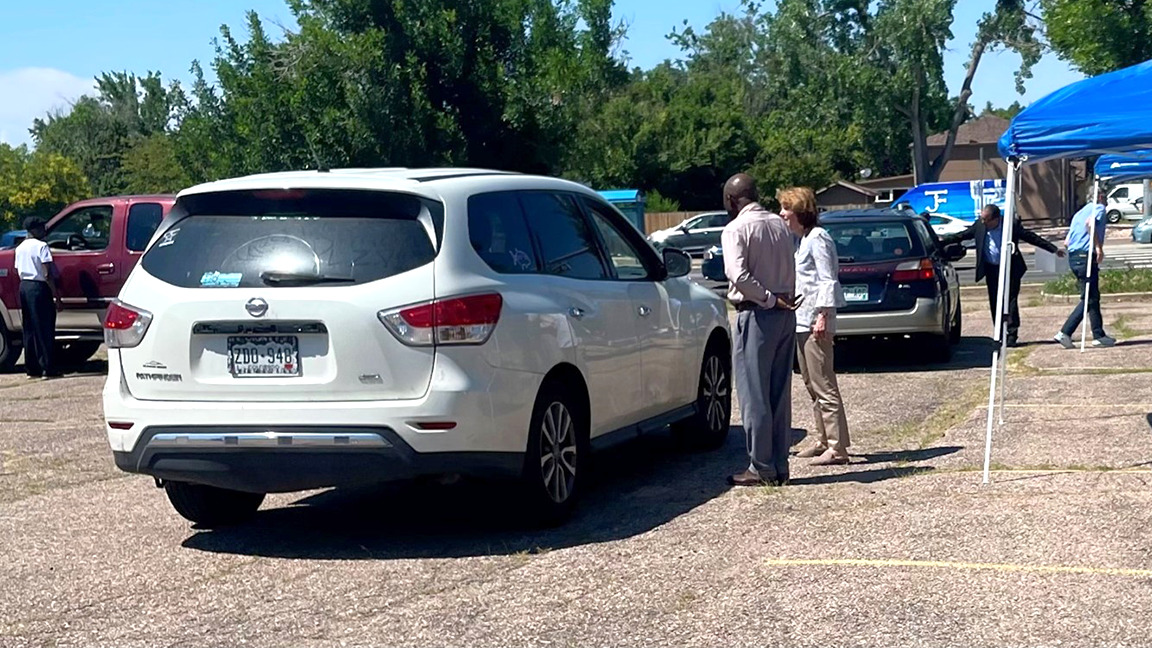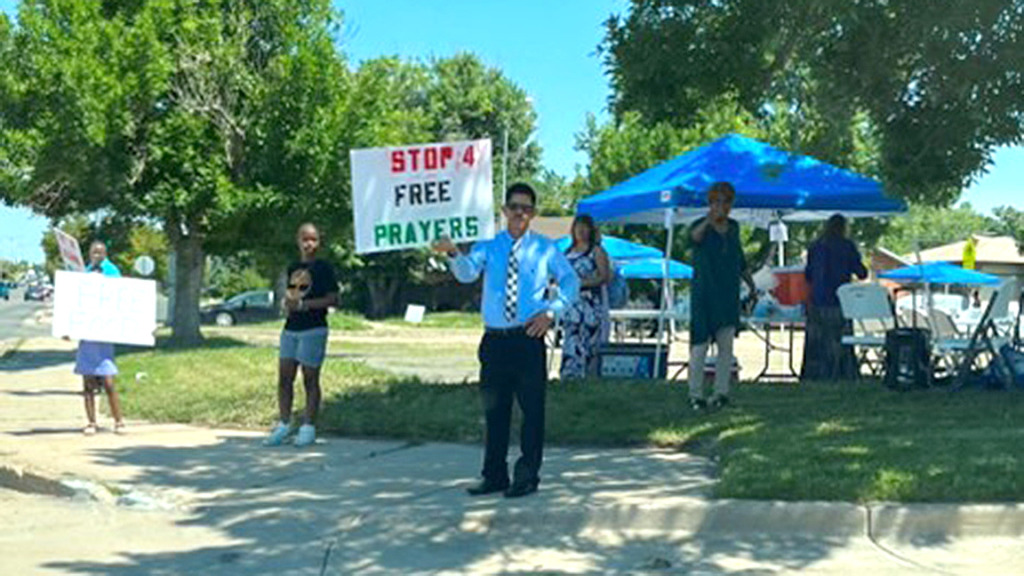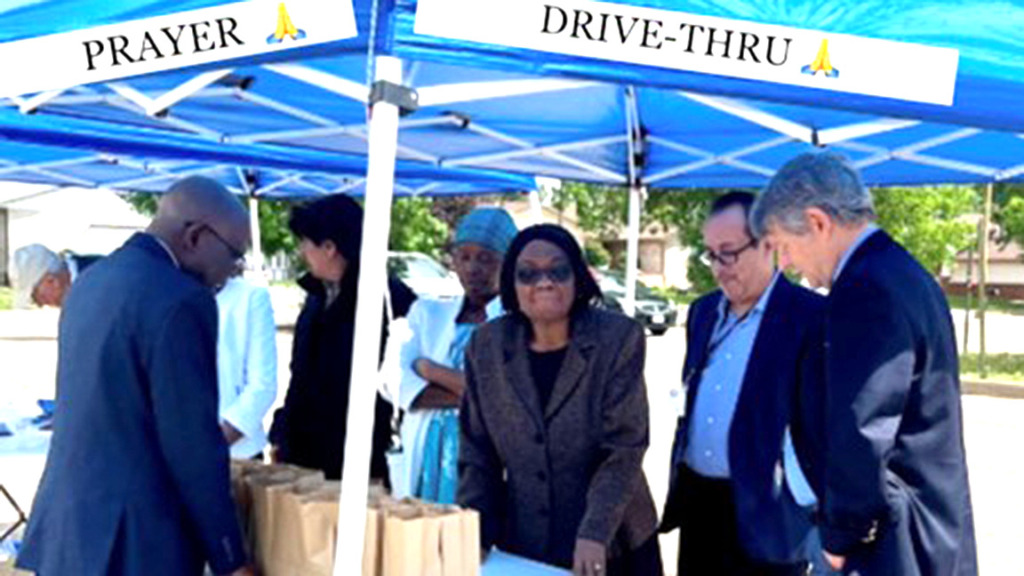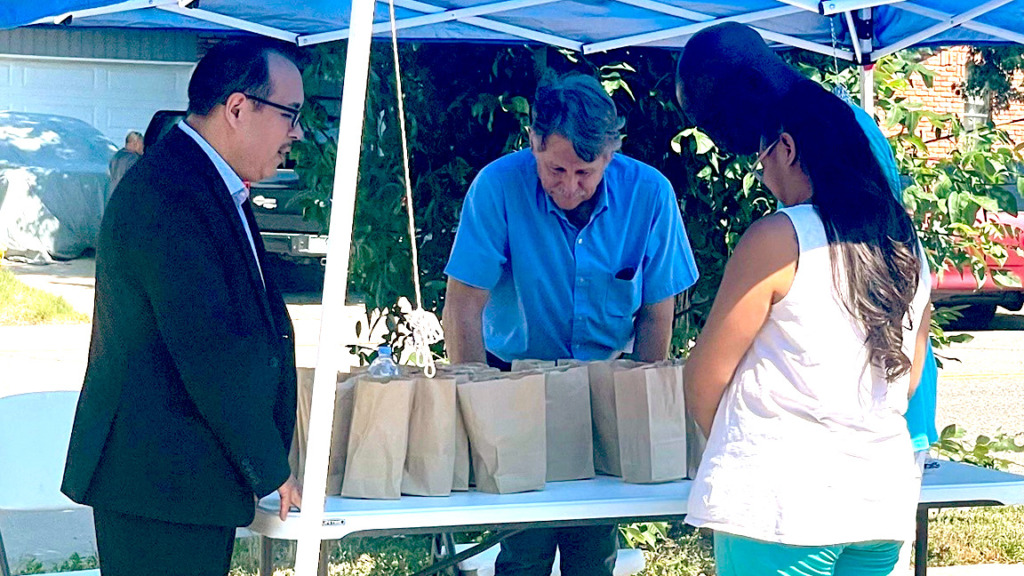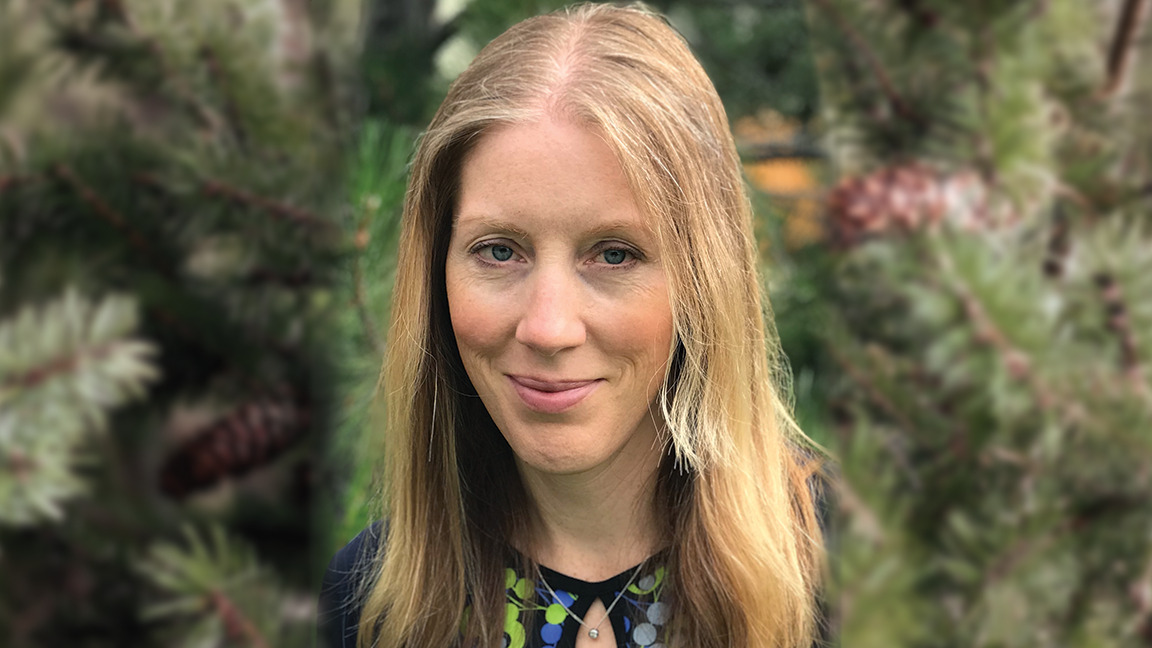On October 22, 1844, a young girl, who was 16 years old and less than a month from her 17th birthday sat waiting, fully expecting to celebrate her 17th Birthday in the New Jerusalem. Her name was Ellen Gould Harmon. That same night, a young man who had very recently turned 23 also sat waiting. His name was James Springer White.
By sunrise on October 23, 1844, both Ellen and James had suffered the world-shattering Great Disappointment—the event that shaped the remainder of their lives. In December 1844, Ellen Harmon (who by now had turned 17) had her first vision—less than two months after the Great Disappointment. The basic essence of that vision was confirmation that October 22, 1844, had indeed been cosmically important.1
When they were later married, by a Justice of the Peace, on August 30, 1846, Ellen was 18 and James was 25. When James founded The Present Truth in 1849, James was about 26 and Ellen was about 19. When the publication became the Second Advent Review and Sabbath Herald in 1850, James was now 27 and Ellen was 20. When the Seventh-day Adventist General Conference was finally organized in 1863, James was about 40, and Ellen was about 33.
Why begin this article with the Whites’ ages when the seminal events shaping their subsequent lives unfolded?
Partially, this is because when we see later photographs of the two, we sometimes imagine them developing the Seventh-day Adventist vision of Christianity as sober and mature adults. By no means is this true; they were teenagers and twenty-somethings when the Advent Movement was coalescing into what became the Seventh-day Adventism Church.
I see a journey (God-inspired, we trust) by two very earnest very young adults who part of a core group struggling to make sense of what happened in 1844 as what ultimately led to the transfiguration of a movement in the stream of historic free-church Anabaptist Christianity2 into our own Seventh-day Adventist Christian community.
Because much of our doctrine and tradition is shared with the larger historic free-church Anabaptist stream of Christianity, I want to focus on three particular innovations in doctrine and belief that arose in the Adventist movement through the study of James White and the study and visions of Ellen G. White.3
As I see it, these three doctrinal innovations are the essence of what distinguishes the authentic voice of our Seventh-day Adventist movement from the larger stream of free-church Anabaptist Christianity. If you want a fuller discussion of these three points, I used the—and recommend using—the book A Brief History of Seventh-day Adventists by George R. Knight,4 as well as my own first grade through college education and immersion in Seventh-day Adventist parochial education—to write this short article. Let’s focus on what the Seventh-day Adventist Church has created in Christianity that is unique to its own vision of what it means to follow Jesus.
1. Trying to understand what happened in 1844 led to a tangible renewal of the first-century CE (i.e. AD) sense that the Second Coming was imminent and some people currently-alive would see it.
On the Morning of October 23, 1844, followers of William Miller had to make a choice. Would they view the Millerite understanding of end-time events in Danial and Revelation as a flawed misreading of the Biblical Text or not? For the vast Majority of Millerites, the choice was to rather shame-facedly decide they had been mistaken and either return to the churches from which they had departed or lose their faith entirely. It speaks to the tenacity of the young Advent movement coalescing, eventually, around James and Ellen White, that some decided instead to re-evaluate what their expectations had been—particularly as they had interpreted the word “Sanctuary” that was to be cleansed. And that re-evaluation led to a vibrant new understanding of Christ’s soon coming.
Those early Adventists began to sound much like the people to whom the Apostle Paul wrote his Epistles. I am thinking particularly of the famous passage in 1 Corinthians 15 where the Apostle so poetically describes the resurrection at the Second Coming. This excitement has led to wonderful things for Adventism. When I was in college, there was still some hesitation about creating endowments for our colleges and universities, for fear we were saving money that should be used to spread the good news of Jesus’s soon Coming. That excitement was enough to sustain Seventh-day Adventism for approaching two centuries.
As we are approaching the bicentennial of the Great Disappointment, the question for us today is how we continue to maintain that longing and expectation of the Second Coming as the time lengthens. This same struggle also occupied the larger Christian Church in the second and third centuries AD (CE).
My question for the Seventh-day Adventist Church today is: “How does our authentic Adventism help us approach this issue for our current generation? And how will it be different from what happened in the second and third centuries AD (CE)?”
2. The struggle to reconcile God’s love with eternal damnation led to the uniquely-Adventist Doctrines of Soul-Sleep and Conditional Immortality
To discuss this, I want to compare the usual verse I was taught as a proof text in school with its particular context and compare it to another couple texts. To begin, we compare Ecclesiastes 9:5 with Revelation 6:9-11 and Luke 16:14-31.
For the vast majority of Christian recorded history, Christians read the stories in Revelation and Luke as showing a literal version of what happens after we die and read the verse from Ecclesiastes as a rhetorical point about it being better to be alive than to be dead.
James and Ellen G. White and the early Adventists studied and thought and came to a consensus that (in reality), the Bible and the Character of God as a whole were not consistent with God creating independently-eternal souls, whose suffering God would have no power to relieve, if the souls rejected Him. They came to a consensus that in fact, death was followed by soul unconsciousness and that only at the second coming and the Resurrection would humans be subject to Judgement. And moreover, that after the Final Judgement, only the Saved would live eternally.
Returning to returning to our three versus, the Adventists determined that, of the three, only the one in Ecclesiastes should be read literally—and that both Jesus’s parable and the “crying out from under the altar” were both meant to be read metaphorically. In doing this, the early Adventists resolved for the Seventh-day Adventist Church an ambiguity about God’s character that had plagued Christianity for nearly 1800 years.
3. The deep desire to live a truly wholistic Christian life as communicated by Ellen G. White led to the Adventist Health Message (with the help of John Harvey Kellogg)5
Of all the aspects of being raised within the Seventh-day Adventist tradition, the Health Message is the part that (over my lifetime) has gone from being particularly “weird” in the eyes of American society in general to being seen as close to progressive and positively prophetic. Kellogg is now viewed as a far-sited pioneer remembered for creating such American institutions as breakfast cereal—and Hollywood has remembered him (for better or worse) in movies like the “Road to Wellville.” Today, the new plethora of meat substitutes, as well as vegetarian and vegan options for eating, have appeared everywhere—in both American supermarkets and restaurants.
When my family used to travel across the U.S. from Colorado to Maine each summer, the only thing we kids could find on the typical “diner” menu for us to eat tended to be salads and “grilled cheese” sandwiches (best not ask about all the fat on the grill in which the sandwich was cooked alongside hamburgers and hot dogs). The only place one could find meat substitutes was at what we used to call the Adventist Book and Bible House.
Yet Ellen G. White and John Harvey Kellogg’s choice to build a Sanitarium in Boulder, Colorado, is the reason I was raised where I was. And throughout my life, my entire family has been shaped by Adventism’s great over-representation in American health care. This is a legacy I took for granted as a child, and now I celebrate.
One of my favorite hymns—written by George Herbert—is “King of Glory, King of Peace.” In reflecting on the Health Message, and on that unique witness Seventh-day Adventism offers to the rest of Christianity, I will end with Herbert’s amazing words. The health message and Ellen G. White’s particular passion for this message has helped us fulfill Herbert’s words in this world:
King of glory, King of peace,
I will love Thee;
and that love may never cease,
I will move Thee.
Thou hast granted my request,
Thou hast heard me;
Thou didst note my working breast,
Thou hast spared me.
Wherefore with my utmost art
I will sing Thee,
and the cream of all my heart
I will bring Thee.
Though my sins against me cried,
Thou didst clear me;
and alone, when they replied,
Thou didst hear me.
Sev’n whole days, not one in sev’n,
I will praise Thee;
in my heart, though not in heav’n,
I can raise Thee.
Small it is, in this poor sort
to enroll Thee:
e’en eternity’s too short
to extol Thee.
In conclusion, I think we can celebrate Seventh-day Adventism’s unique gifts to Christianity and the world particularly in these three particular theological concepts. Indeed, Christianity as a whole would be poorer without Adventist presence in our world.
Shawn P. Nowlan is an attorney currently working for the federal government in Denver. He is a member of the Boulder Adventist Church. Email him at: [email protected]
1 Knight, G. P. (1999). A brief history of Seventh-Day Adventists. Kindle version at: https://a.co/1rQvdeX
2 The term “free-church Anabaptist Christian tradition” is my own shorthand for the long-standing stream—beginning at the Reformation—of Protestant churches that dissented from the state-established Protestant traditions such as Lutheranism, Presbyterianism, and Anglicanism. For “Free Churches,” in a brief summary of the type of activity they embraced, Diarmuid MacCulloch used the descriptive phrase “improving activism … including Sunday Schools, lectures, social activities, even hymn books. In his index, he also includes groups in England such as Baptists, Congregationalists, Dissenters, and Methodists. Id. At 1138.
MacCulloch, D. (2009). Christianity: The First Three Thousand Years. Viking Penguin, p.861.
The term “Anabaptist” is the historic term for all Christians who believe baptism is not to be applied to be infants, but to be the free choice of individuals who have reached an age where they are competent to make the decision for themselves. “Anabaptist” means “re-baptized” since the first Reformation-era individuals who advocated for this belief has all been baptized as infants themselves.
There have been millions of Christians since the Reformation who were free church anabaptists, but who were (and are) not Seventh-day Adventists. For purposes of this article, I have been attempting to focus on what is uniquely doctrine of the Seventh-day Adventist movement and church itself. That is, why did the early Adventists feel the need to create a separate Christian denomination in 1863?
3 “The primary method used by the pioneers in their doctrinal formation was to study the Bible until a general consensus developed. At that point Ellen White would sometimes receive a vision on a topic already studied, primarily to reaffirm the consensus and to help those who were still out of harmony with the majority to accept the correctness of the group’s biblically derived conclusions. Thus, we can best view Mrs. White’s role in doctrinal development as confirmation rather than initiation.” . . . Knight, G. P. (1999). A brief history of Seventh-Day Adventists. Kindle version at: https://a.co/1rQvdeX
4 Knight, G. P. (1999). A brief history of Seventh-Day Adventists. Kindle version at: https://a.co/1rQvdeX
5 The striking emphasis on health and vegetarianism is a feature of the Seventh-day Adventist message so unique that it is specifically mentioned in Diarmaid MaccColloch’s magisterial and bestselling general history of Christianity: MacCulloch, D. (2009). Christianity: The First Three Thousand Years. Viking Penguin, p.861.
